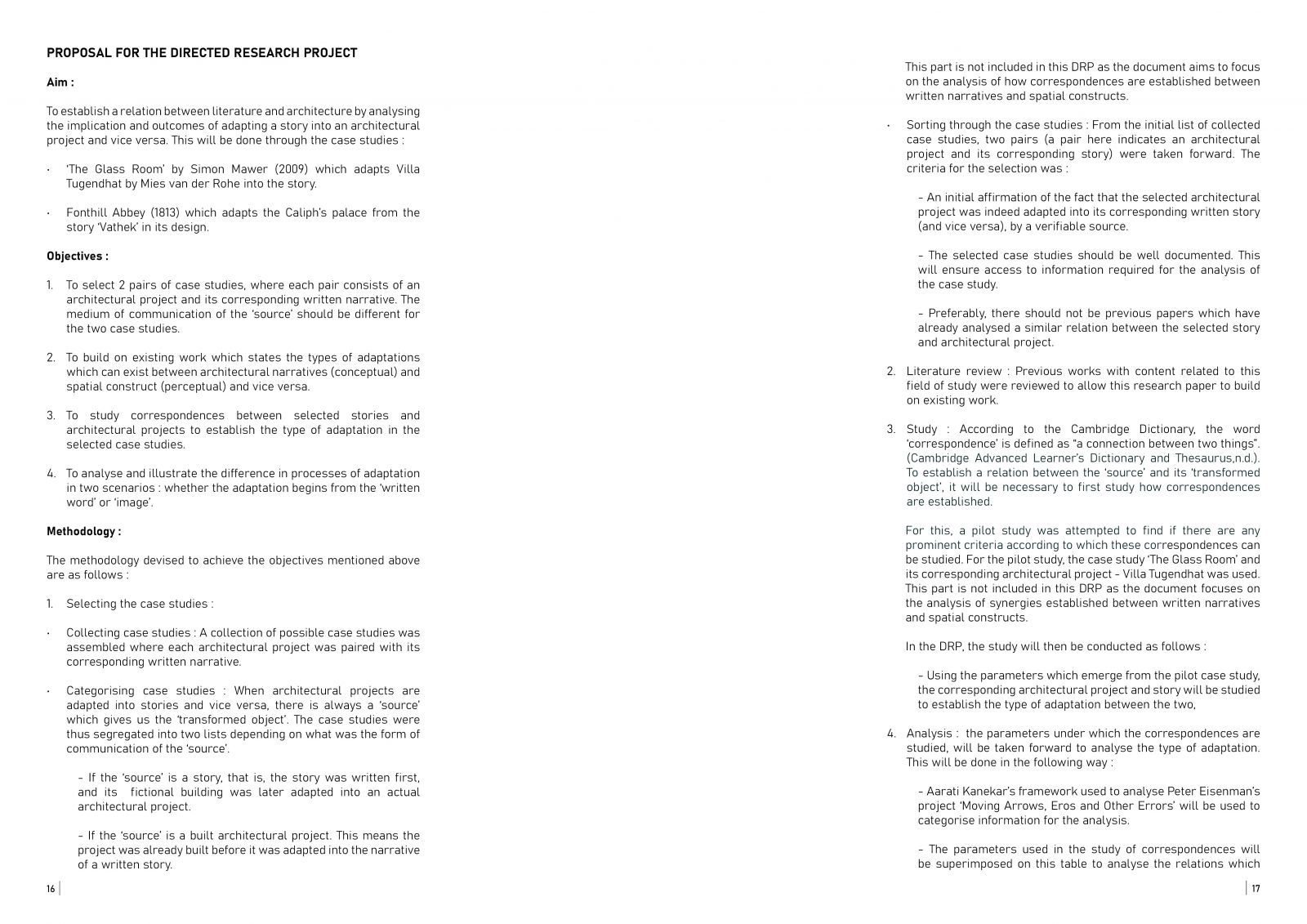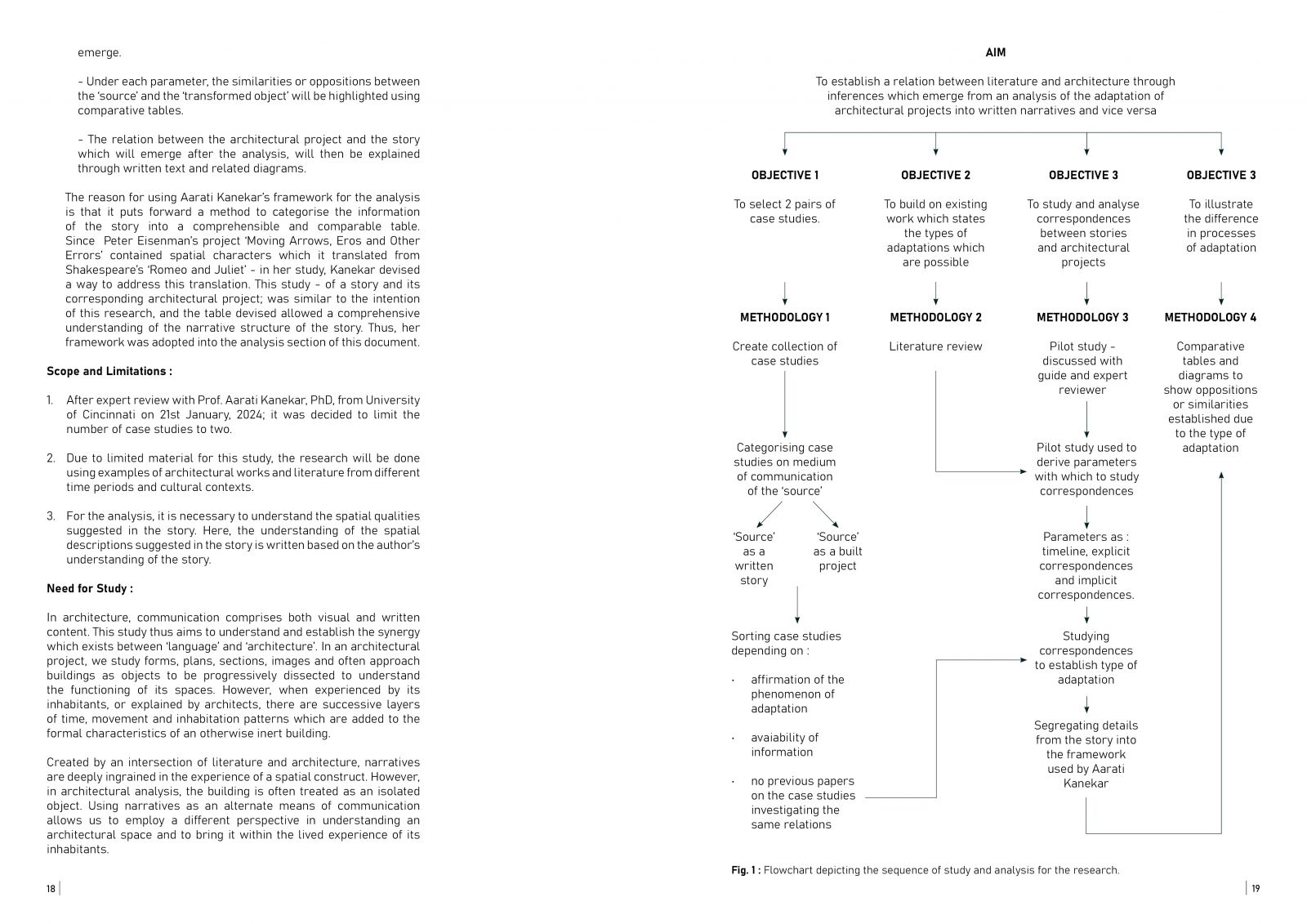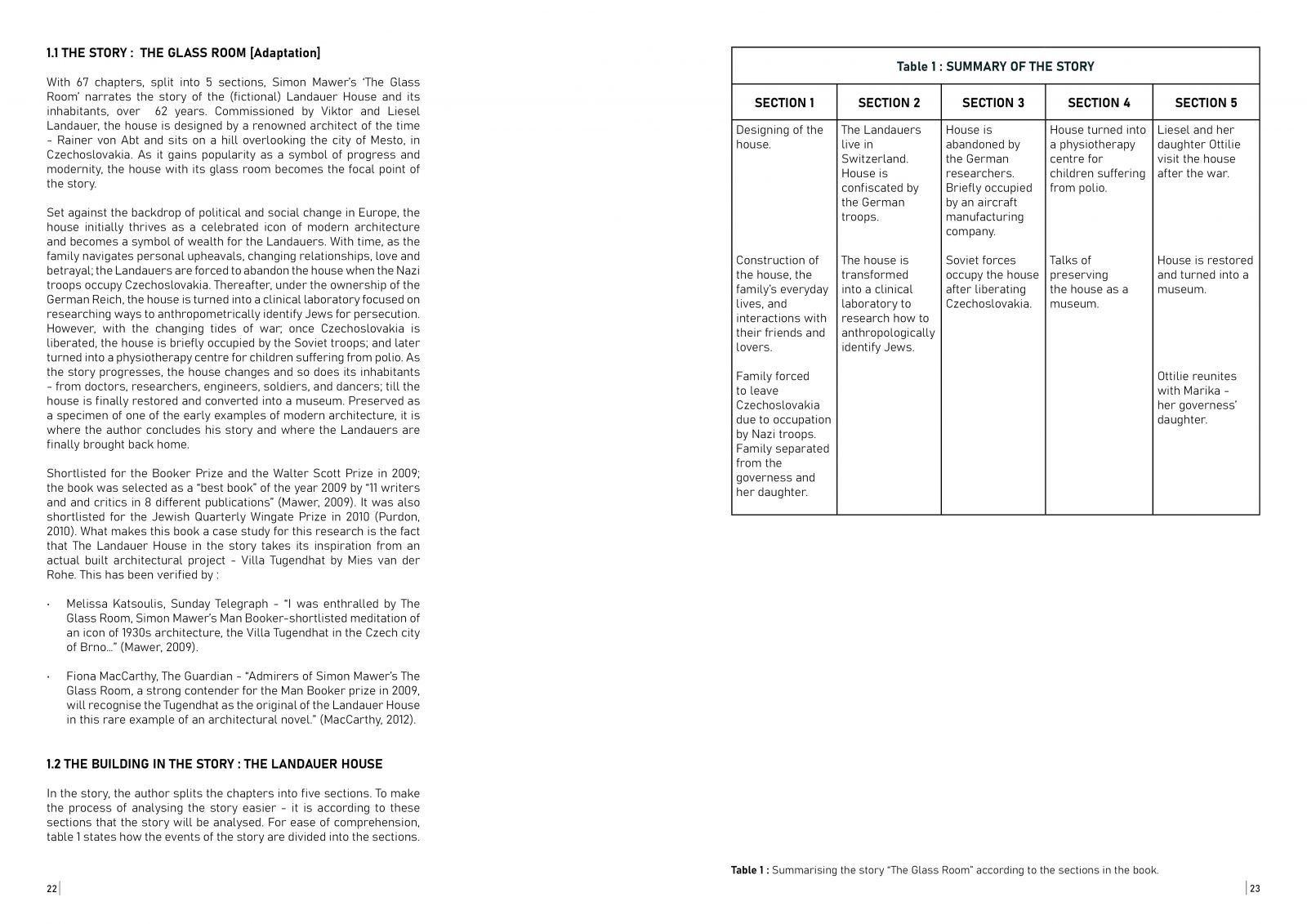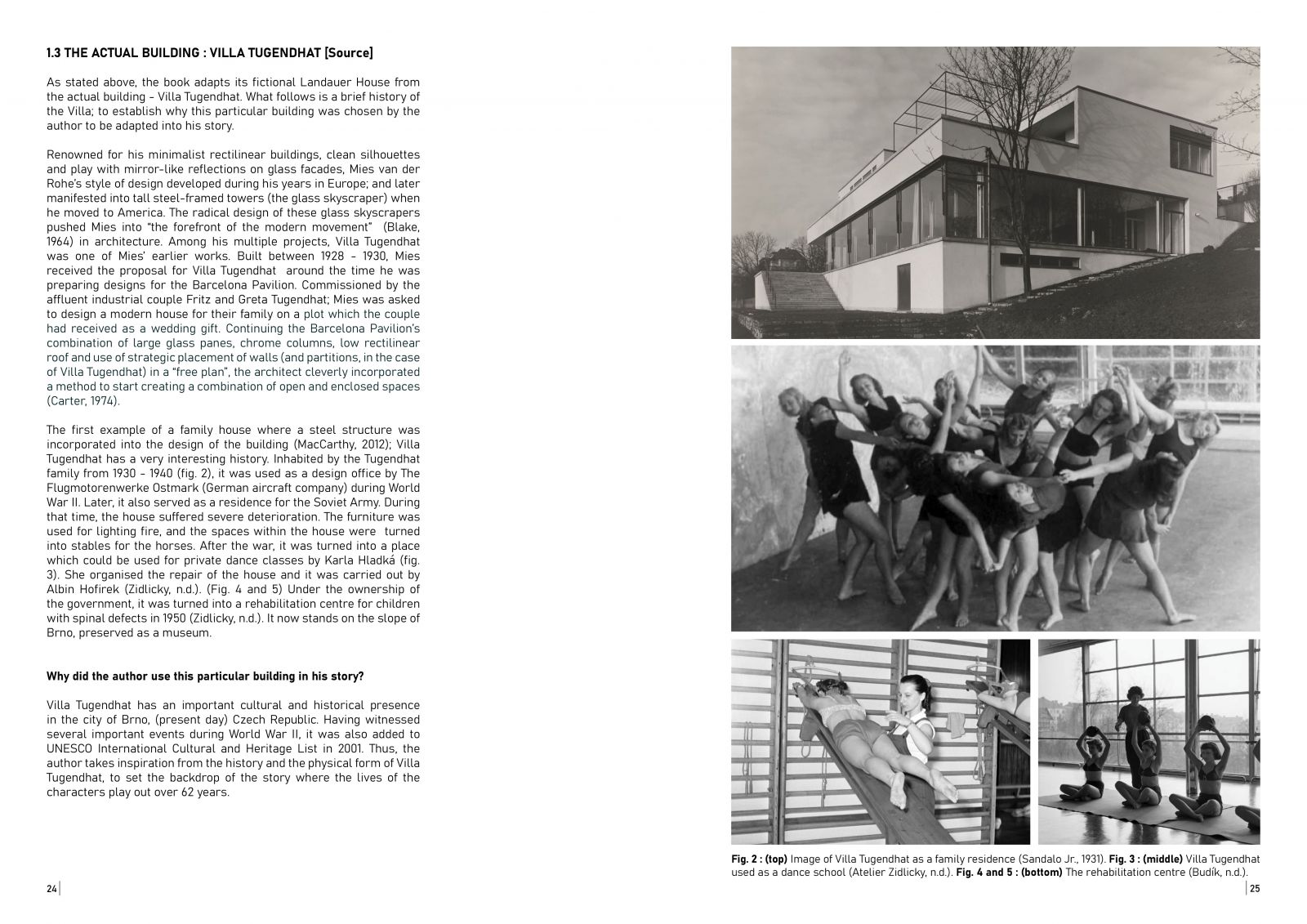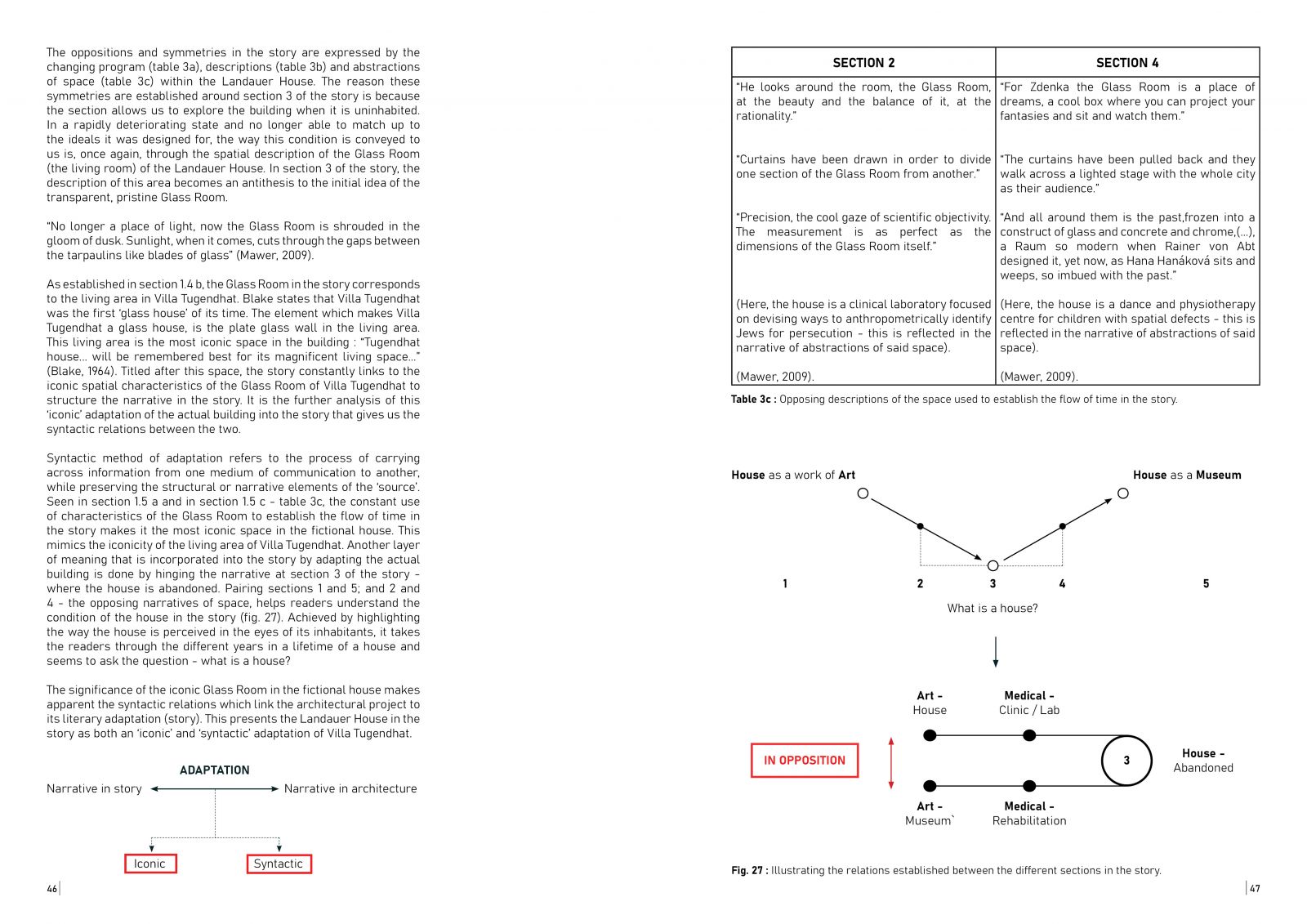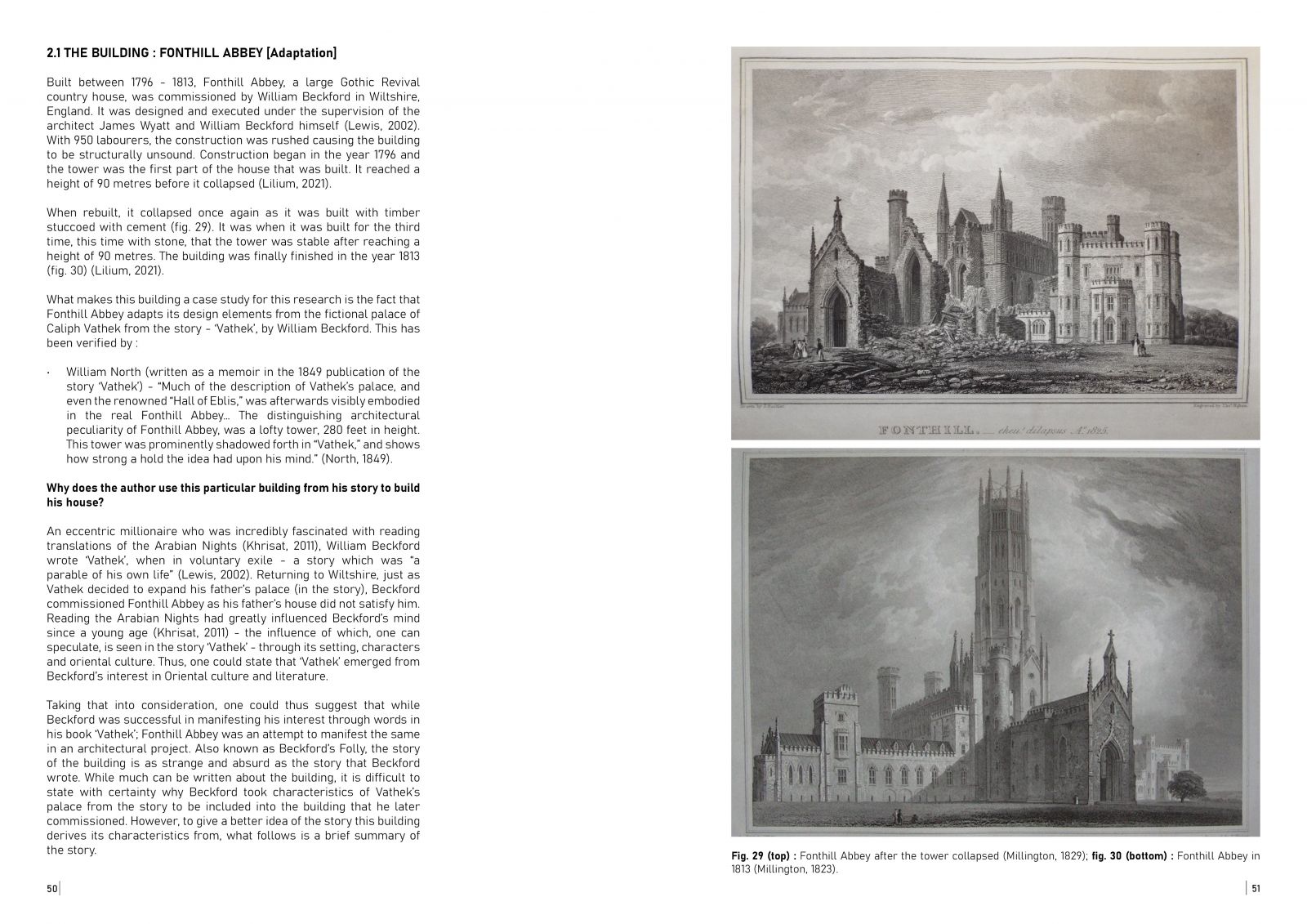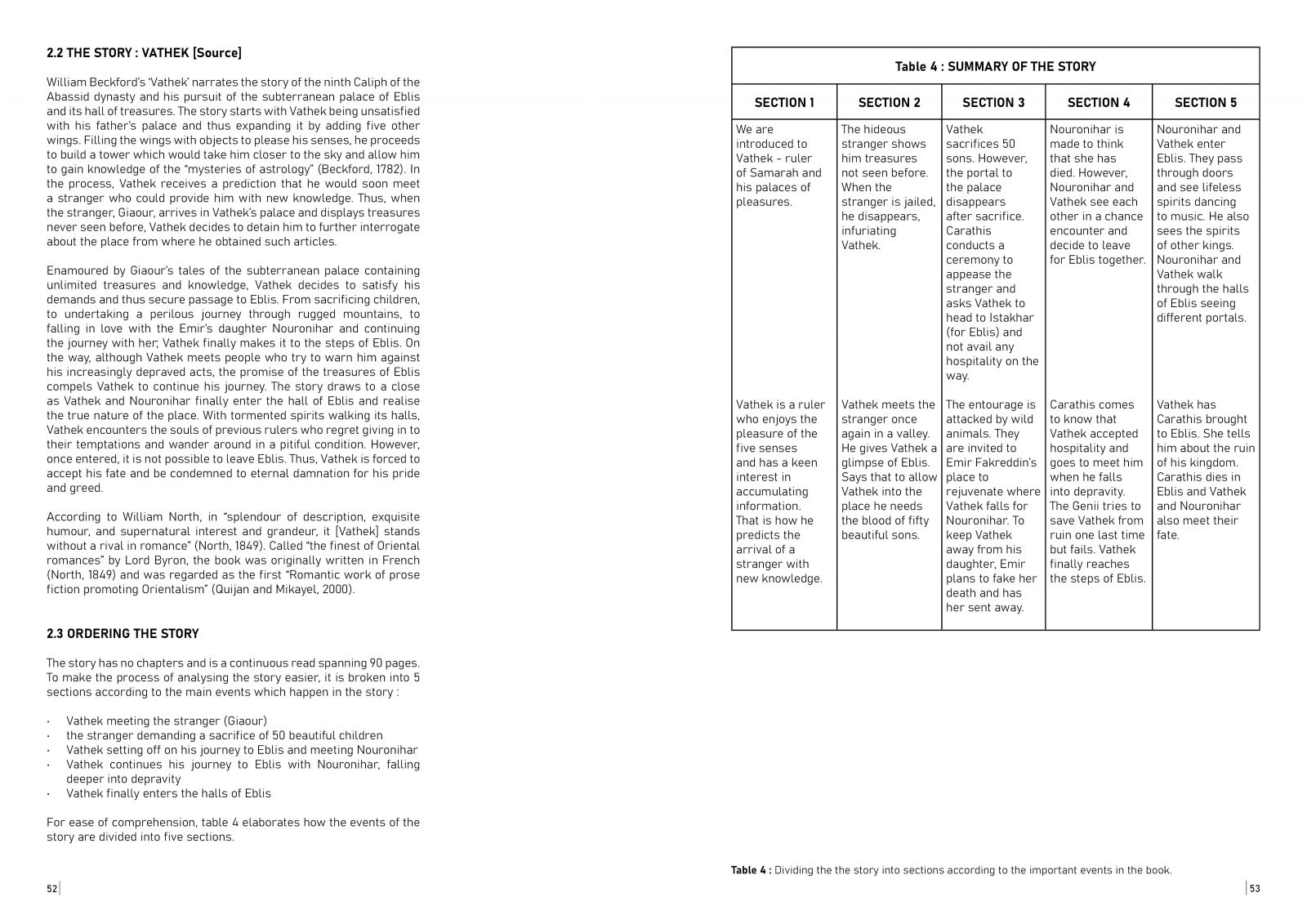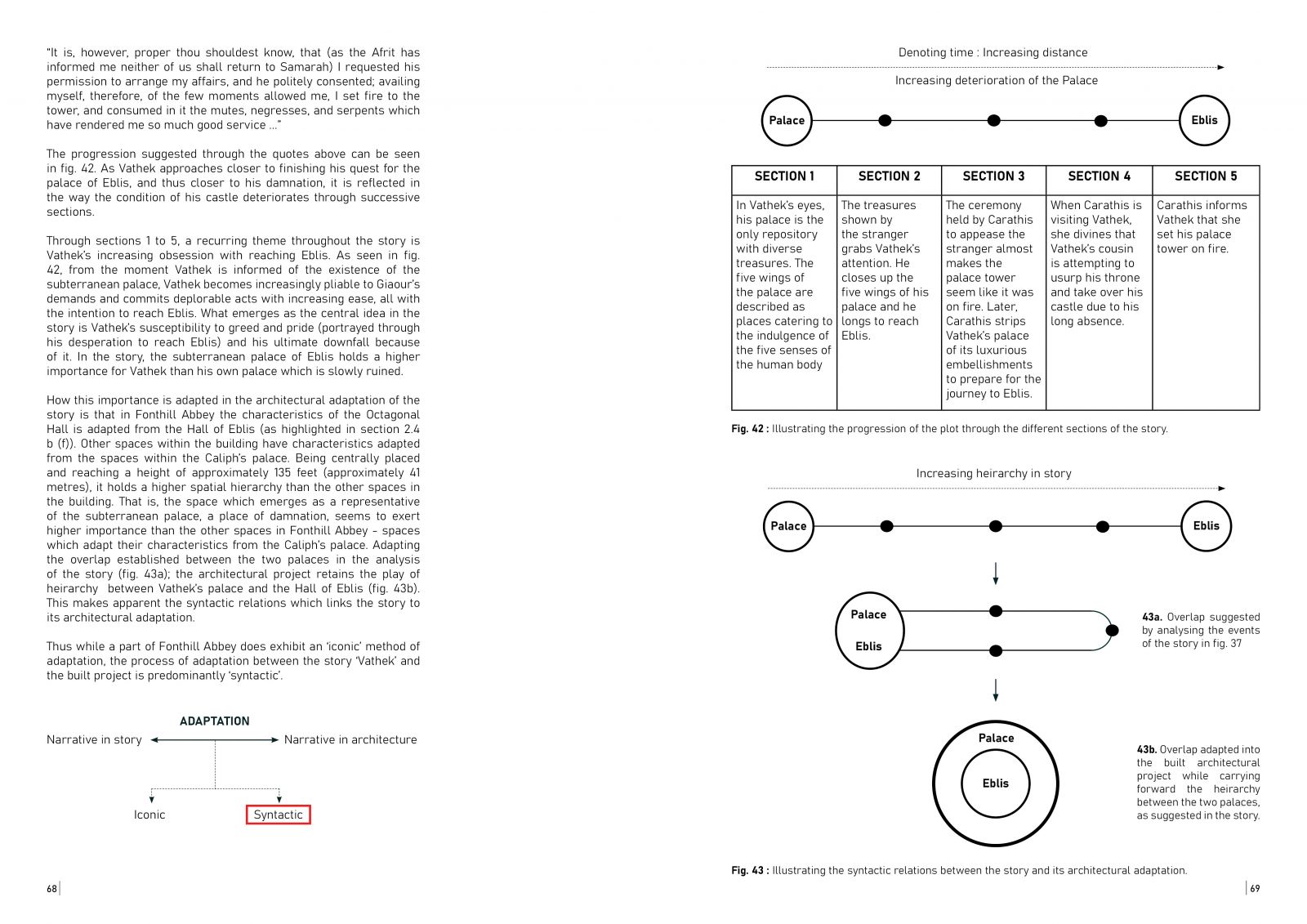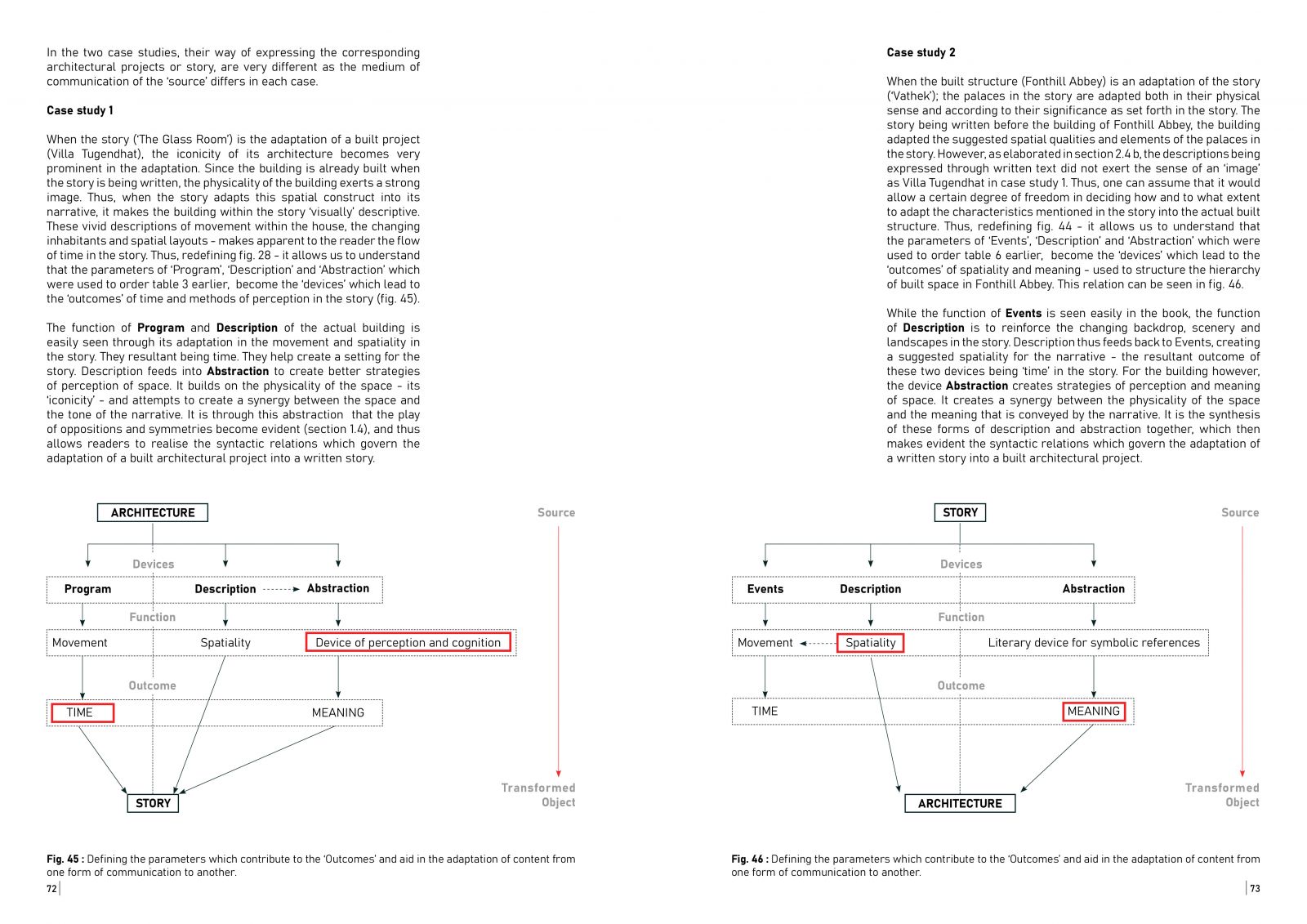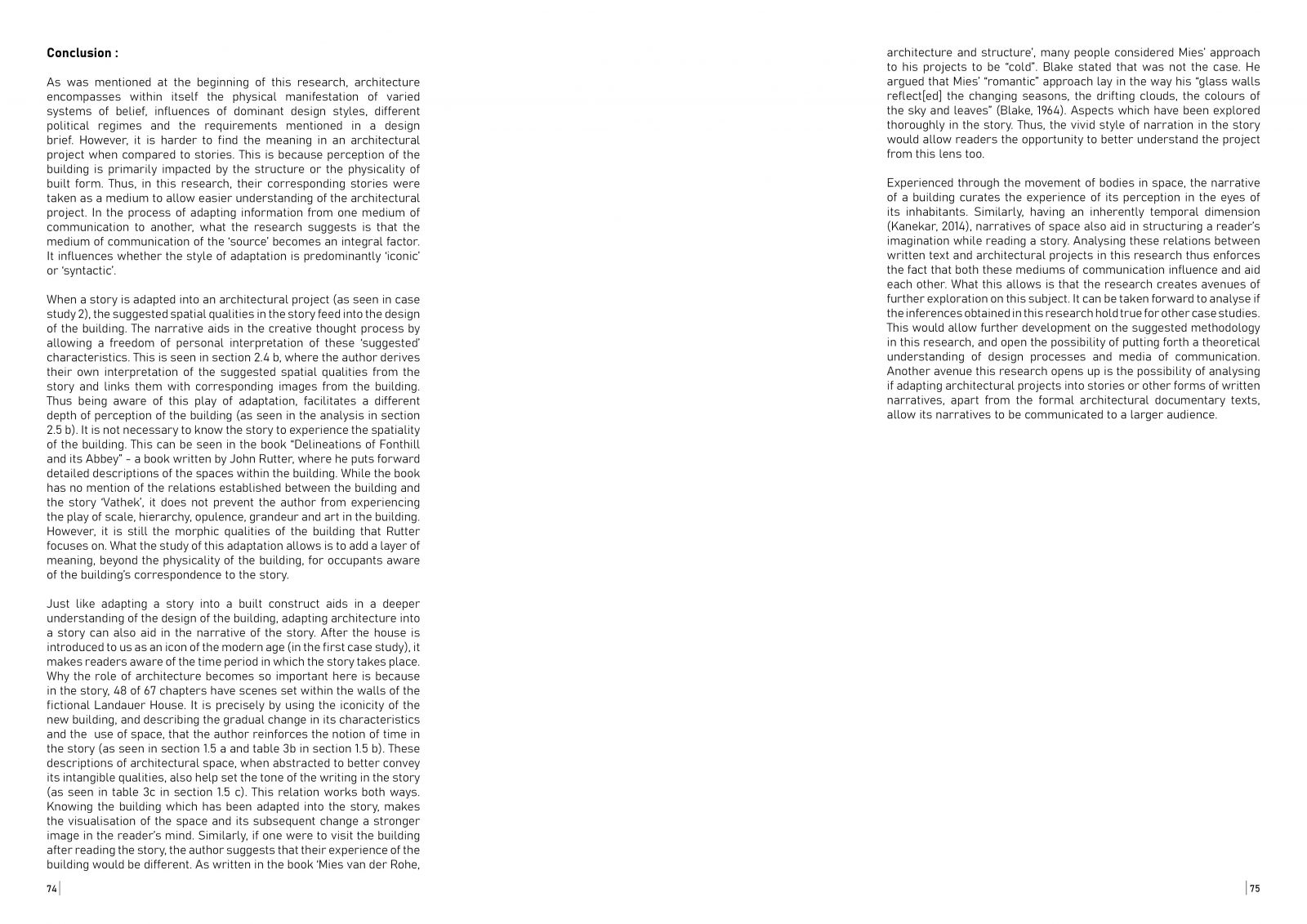Your browser is out-of-date!
For a richer surfing experience on our website, please update your browser. Update my browser now!
For a richer surfing experience on our website, please update your browser. Update my browser now!
Architecture is not autonomous. It is an outcome of many different
systems of thought, and utilises different means of expression
to both express a design in real space, or to communicate an idea
to its spectators. This ties it back to what Calvino suggests as the
components of an imaginative process : image and written expression.
However, there is a marked difference in the way the two forms of
expression are conceived. In written texts (here, stories), one finds it
easier to grasp the narrative; while in an image (here, architecture),
it is easier to grasp the “compositional structure” (Kanekar, 1999)
of the built form. As Sofia Psarra explains, while stories become a
representation of reality; architecture expresses itself through the
actual construction of space. What becomes the dominant perception
of architectural projects - is its image and a sequential understanding
of its spaces. The meaning put forth by the spatial construct slips
one’s attention. The research is thus an attempt to understand the
way narratives of space add a layer of understanding to architectural
spaces and bring them closer to the lived experience of its inhabitants.
“The reason for analysing works of literature is because, similar to
the sequential motion of perception through language, buildings are
experienced gradually through movement.” (Psarra, 2009).
Created by the intersection of the conceptual and perceptual
realms, architecture exists in the cognitive memory of its perceived
characteristics in the reader / viewer’s mind. Narratives are thus
deeply ingrained in the spatial experience of built spaces. Given this
intrinsic relation between the two forms of expression - it becomes
pertinent to investigate how approaching the understanding of an
architectural project from the perspective of a story can help one
gain a different perspective of the meaning of said space.
